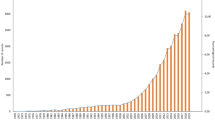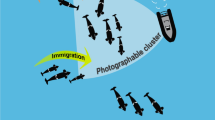Abstract
SOCPROG is a set of programs which analyses data on animal associations. Data usually come from observations of the social behaviour of individually identifiable animals. Associations among animals, sampling periods, restrictions on the data and association indices can be defined very flexibly. SOCPROG can analyse data sets including 1,000 or more individuals. Association matrices are displayed using sociograms, principal coordinates analysis, multidimensional scaling and cluster analyses. Permutation tests, Mantel and related tests and matrix correlation methods examine hypotheses about preferred associations among individuals and classes of individual. Weighted network statistics are calculated and can be tested against null hypotheses. Temporal analyses include displays of lagged association rates (rates of reassociation following an association). Models can be fitted to lagged association rates. Multiple association measures, including measures produced by other programs such as genetic or range use data, may be analysed using Mantel tests and principal components analysis. SOCPROG also performs mark-recapture population analyses and movement analyses. SOCPROG is written in the programming language MATLAB and may be downloaded free from the World Wide Web.




Similar content being viewed by others
References
Altmann J (1974) Observational study of behavior: sampling methods. Behaviour 49:227–267
Bejder L, Fletcher D, Bräger S (1998) A method for testing association patterns of social animals. Anim Behav 56:719–725
Blumstein DT, Daniel JC (2007) Quantifying behavior the JWatcher way. Sinauer, Sunderland, MA
Borgatti SP, Everett MG, Freeman LC (1999) UCINET 6.0 Version 1.00. Analytic Technologies, Natick, MA
Bridge PD (1993) Classification. In: Fry JC (ed) Biological data analysis. Oxford University Press, Oxford, UK, pp 219–242
Burnham KP, Anderson DR (2002) Model selection and multimodel inference: a practical information-theoretic approach. Springer, New York
Cairns SJ, Schwager SJ (1987) A comparison of association indices. Anim Behav 35:1454–1469
Cheney DL, Seyfarth RM, Smuts BB, Wrangham RW (1987) The study of primate societies. In: Smuts BB, Cheney DL, Seyfarth RM, Wrangham RW, Struhsaker TT (eds) Primate societies. Chicago University Press, Chicago, pp 1–8
Croft DP, James R, Krause J (2008) Exploring animal social networks. Princeton University Press, Princeton, NJ
Digby PGN, Kempton RA (1987) Multivariate analysis of ecological communities. Chapman and Hall, London
Efron B, Stein C (1981) The jackknife estimate of variance. Ann Stat 9:586–596
Flack JC, Girvan M, de Waal FBM, Krakauer DC (2006) Policing stabilizes construction of social niches in primates. Nature 439:426–429
Ginsberg JR, Young TP (1992) Measuring association between individuals or groups in behavioural studies. Anim Behav 44:377–379
Hemelrijk CK (1990a) A matrix partial correlation test used in investigations of reciprocity and other social interaction patterns at group level. J Theor Biol 143:405–420
Hemelrijk CK (1990b) Models of, and tests for, reciprocity, unidirectionality and other social interaction patterns at a group level. Anim Behav 39:1013–1029
Hinde RA (1976) Interactions, relationships and social structure. Man 11:1–17
Holme P, Park SM, Kim BJ, Edling CR (2007) Korean university life in a network perspective: dynamics of a large affiliation network. Physica A 373:821–830
Jarman PJ (1974) The social organization of antelope in relation to their ecology. Behaviour 48:215–267
Krause J, Lusseau D, James R (2009) Introduction to animal social networks. Behav Ecol Sociobiol (in press)
Lehner PN (1998) Handbook of ethological methods. Cambridge University Press, Cambridge, UK
Lusseau D, Whitehead H, Gero S (2008) Incorporating uncertainty into the study of animal social networks. Anim Behav 75:1809–1815
Martin P, Bateson P (2007) Measuring behaviour: an introductory guide, 3rd edn. Cambridge University Press, Cambridge, UK
Miklós I, Podani J (2004) Randomization of presence–absence matrices: comments and new algorithms. Ecology 85:86–92
Milligan GW, Cooper MC (1987) Methodology review: clustering methods. Appl Psychol Meas 11:329–354
Morgan BJT, Simpson MJA, Hanby JP, Hall-Craggs J (1976) Visualizing interaction and sequential data in animal behaviour: theory and application of cluster-analysis methods. Behaviour 56:1–43
Newman MEJ (2004) Analysis of weighted networks. Phys Rev E 70:056131
Newman MEJ (2006) Modularity and community structure in networks. Proc Natl Acad Sci USA 103:8577–8582
Noldus Information Technologies (2003) MatMan, reference manual, version 1.1. Noldus, Wageningen, The Netherlands
Pepper JW, Mitani JC, Watts DP (1999) General gregariousness and specific social preferences among wild chimpanzees. Int J Primatol 20:613–632
Queller DC, Goodnight KF (1989) Estimating relatedness using genetic markers. Evolution 43:258–275
Schnell GD, Watt DJ, Douglas ME (1985) Statistical comparison of proximity matrices: applications in animal behaviour. Anim Behav 33:239–253
Smouse PE, Long JC, Sokal RR (1986) Multiple regression and correlation extensions of the Mantel test of matrix correspondence. Syst Zool 35:627–632
Strier KB (1997) Behavioral ecology and conservation biology of primates and other animals. Adv Study Behav 26:101–158
Sutherland WJ (1998) The importance of behavioural studies in conservation biology. Anim Behav 56:801–809
Visser ME (1993) The Observer, a software package for behavioural observations. Anim Behav 45:1045
Wey T, Blumstein DT, Shen W, Jordán F (2008) Social network analysis of animal behaviour: a promising tool for the study of sociality. Anim Behav 75:333–344
White GC, Burnham KP (1999) Program MARK: survival estimation from populations of marked animals. Bird Study (Suppl) 46:120–138
Whitehead H (1995) Investigating structure and temporal scale in social organizations using identified individuals. Behav Ecol 6:199–208
Whitehead H (1997) Analyzing animal social structure. Anim Behav 53:1053–1067
Whitehead H (1999) Testing association patterns of social animals. Anim Behav 57:F26–F29
Whitehead H (2001) Analysis of animal movement using opportunistic individual-identifications: application to sperm whales. Ecology 82:1417–1432
Whitehead H (2007) Selection of models of lagged identification rates and lagged association rates using AIC and QAIC. Commun Stat Simul Comp 36:1233–1246
Whitehead H (2008a) Precision and power in the analysis of social structure using associations. Anim Behav 75:1093–1099
Whitehead H (2008b) Analyzing animal societies: quantitative methods for vertebrate social analysis. Chicago University Press, Chicago, IL
Whitehead H, Dufault S (1999) Techniques for analyzing vertebrate social structure using identified individuals: review and recommendations. Adv Study Behav 28:33–74
Whitehead H, Bejder L, Ottensmeyer AC (2005) Testing association patterns: issues arising and extensions. Anim Behav 69:e1–e6
Wittemyer G, Douglas-Hamilton I, Getz WM (2005) The socio-ecology of elephants: analysis of the processes creating multi-tiered social structures. Anim Behav 69:1357–1371
Acknowledgements
Thanks to Robin Baird, Jenny Christal, Susan Dufault, Shane Gero, Shannon Gowans, Andrea Ottensmeyer and, especially, David Lusseau for ideas and testing of the programs. Susan Dufault put SOCPROG on the World Wide Web. The research was funded by the Natural Sciences and Engineering Research Council of Canada. I am grateful for the constructive and detailed comments of two anonymous reviewers.
Author information
Authors and Affiliations
Corresponding author
Additional information
Communicated by L. Z. Garamszegi.
Appendix
Appendix
Some technical details
The SOCPROG programs are in the programming language MATLAB (The MathWorks, Inc., 24 Prime Park Way, Natick, Massachusetts, USA 01760-1500; www.mathworks.com). Programs were originally (1997) written in MATLAB4.2 plus the Statistics Toolbox, but the current version (SOCPROG 2.3) uses MATLAB7.4 plus the Statistics Toolbox. It should be very largely compatible with any other MATLAB7 version.
The standard version of the programs (which needs MATLAB plus the Statistics toolbox) and the compiled version (which does not need MATLAB, but possesses some limitations) can be downloaded free from the web site: http://myweb.dal.ca/hwhitehe/social.htm. There is also an online version of the manual at this site.
The programs were developed on the Windows versions of MATLAB, but they are known to work reasonably well on the UNIX, LINUX and Macintosh versions. The compiled version of SOCPROG can only be used on Windows platforms.
After downloading the uncompiled version, the user receives a .zip file containing the following: a .pdf version of the manual; SOCPROG MATLAB script and function files; a .pdf list of the MATLAB script and function files, what they do, and some important variables (useful for those with MATLAB experience, and especially those who wish to alter the programs for their own purposes); and simulated data sets which can be used to explore the programs.
The compiled version contains: a .pdf version of the manual; MCRInstaller.exe (which installs a program to run compiled MATLAB code); files with compiled SOCPROG code and simulated data sets which can be used to explore the programs. The fundamental drawback of using the compiled version of MATLAB is a loss of flexibility: The code cannot be changed to perform the exact analysis desired; further analysis of the results in MATLAB is impossible. Perhaps the biggest disadvantage for most users is that the figures and graphs produced by SOCPROG cannot be modified easily (in the uncompiled version they can be altered easily in a huge range of ways). However, the compiled figures can be exported (e.g. as .emf files) which can be edited by other programs.
Support can usually be obtained (often after a delay of some days) by emailing me at hwhitehe@dal.ca.
Rights and permissions
About this article
Cite this article
Whitehead, H. SOCPROG programs: analysing animal social structures. Behav Ecol Sociobiol 63, 765–778 (2009). https://doi.org/10.1007/s00265-008-0697-y
Received:
Revised:
Accepted:
Published:
Issue Date:
DOI: https://doi.org/10.1007/s00265-008-0697-y




